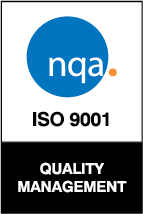Abbess can help you press and/or seal your medical, pharmaceutical, food, electronics, and aerospace packaging under vacuum using either seal bar(s) or seal plate(s). Satisfy Quality Control requirements by automatically monitoring, data-logging, and displaying the seal/press conditions.
As an option, prior to sealing/pressing, the same or other Abbess systems can take your product, in-situ, all the way from cleansing through to its degassed, dosed, and even thermal-cured, state. Abbess Instruments reduces your production failures and processing time by eliminating moisture issues, air bubbles, and air cavities … and by automation (through controlling your process variables).
Observe the process with High-Visibility Vacuum Systems. For our aluminum and stainless steel cube chambers, and aluminum Cylinders, visually observe your inventory (illuminated by optional switchable, in-chamber lighting) through full Acrylic doors and/or optional viewports. Use the same, or other viewports, to optically illuminate/test your in vacuum items at your desired wavelengths. For light-tight operation or testing, use metal doors and cover the ports with blanks.
- Figure 2: Sealer with External Air-Operated Cam: Closed Seal Bar
- Figure 1: Powered Press with Passive Plates
Automatic Operation: Abbess will work with you to customize the automation to your process, just as we will work with you to ensure the system configuration meets your production needs:
The simplest press is configured with passive plates (sized to customer requirements) for manual operation. The press can be upgraded with an actuator for powered pressing (Fig 1), and with heated plates (single or dual) for large area sealing functionality.
While the most basic manual press vacuum system can be controlled manually (by starting/stopping the pump(s) and opening/closing valves), a Vacuum Cycle Controller (VCC) can be added to automate a) vacuum/hold/vent control functions, and b) vacuum and thermal monitoring. Control may be either via panel-mounted buttons and indicators or via a PC with user-specified Graphical User Interface (GUI). A digital VCC will permit a single ‘automatic’ vacuum set point, and is necessary for controlling the press actuator and any thermal plate(s). The seal bar functionality is more complex and must be built in to the PC Touch Screen VCC upgrade option.
With VCC systems, emergency or non-automated vacuum venting can be always readily achieved with the manual vent valves.
Features: A Sealer/Press Vacuum System consists of the following:
- Vacuum Chamber
– A front-loading aluminum cylinder with Acrylic or Aluminum lid. Such chambers can be designed to reach 10-4 Torr.
Or
– A front or top-loading Aluminum or SS cube with full Acrylic or metal doors. Abbess’ all-SS chambers can be designed to reach 10-8 Torr or better. - Vacuum Pump- Provided with Inlet and Exhaust filters. Power and automatic control can be integrated into a Vacuum Cycle Controller (VCC).
- Seal Bars or Plate(s) – Seal Bars/Plates, and thermally passive, powered press plates require upgrading to a VCC. Passive, manually operated plates do not.
- Process Control Enclosure – Contains components necessary for controlling the system as well as logic and interfaces for the Vacuum Cycle Controller.
- Process Timer Control
- Temperature Controller (As Required)
- Status Indicators – Provide visual indication of system status.
- Vacuum Cycle Controller – Control ON/OFF buttons, main power switch.
- Pressure Gauge
- Pressure Transducer/ Gauge Controller – Provides pressure display and set point valve control per integral Pressure Transducer data. Also provides pressure set-point relays that can be used for various system control functions.
- Control Valves
Automatic Vent Valve – Automatic solenoid valve vents air or inert gas purge into chamber based on control input from Vacuum Cycle Controller.
For limited counter space, or large batch sizes:
The entire system can be integrated on a cart using identical or mixed-sized chambers. Since cart mounted systems are shipped turn-key, set-up is minimal. Cart-mounting provides full system mobility and thus flexibility of positioning on your production floor.
Sealer/Press Vacuum System upgrade options include:
- A Vacuum Cycle Controller (VCC) that can be used to automate some or all of the control functions via panel-mounted buttons and indicators (Fig 1). It will permit a single ‘automatic’ altitude/vacuum set point.
- A VCC controlled by a PC with a user-specified Graphical User Interface (GUI) operated through a touch-screen (as illustrated in the Data-Logged High Vacuum Storage System, Altitude Simulation System, and Space Simulation and Thermal Vacuum System STILL TO COME): Required for Seal Bar Systems. This permits: automatic monitoring, data-logging, and vacuum environment display; remote access; and message-sending to operator’s mobile device.
- Mobile cart.
- Heating and/or cooling thermal plates/shelving and control:
for heating up to 150C, or 300C) (as illustrated in the Vacuum Oven System).
and/or for cooling to -196C . - Inert gas purge.
- Circulation fans.
- Mechanical feedthroughs such as shafts with or without rotation.
- Electrical feedthroughs for power and signals.
- Optical ports for optimal transmission of test equipment wavelengths
- Hold down fixture (to keep packaging properly positioned during compression process).
- Drains, and/or spill trays.
- Special coatings such as PTFE non-stick coating, FDA-approved, and electro-polishing (for vacuums ≤10-6 Torr.
- Switchable, internal lighting



